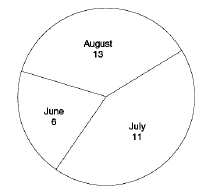What is the best way to determine whether you are exercising too strenuously? Discuss the various signs of exercise intolerance and how you should respond
The best method to determine whether you are exercising too strenuously is to check your heart rate and make sure it does not exceed the limits of your target zone. Exercising above this target zone may not be safe for unconditioned or high-risk individuals.
Several physical signs will tell you when you are exceeding your functional limitations, i.e., experiencing exercise intolerance. These signs include rapid or irregular heart rate, difficult breathing, nausea, vomiting, lightheadedness, headache, dizziness, unusually flushed or pale skin, extreme weakness, lack of energy, shakiness, sore muscles, cramps, and tightness in the chest. If you notice any of these symptoms, seek medical attention before continuing your exercise program.
Recovery heart rate is another indicator of overexertion. To a certain extent, recovery heart rate is related to fitness level. The higher your cardiorespiratory fitness level, the faster your heart rate decreases following exercise. As a rule, heart rate should be below 120 beats per minute (bpm) five minutes into recovery. If your heart rate is above 120 bpm, you most likely have overexerted yourself or could have some other cardiac abnormality. If you lower the intensity of exercise, the duration of exercise, or both and still have a fast heart rate five minutes into recovery, consult your physician.
You might also like to view...
Which of the following is an appropriate use of food?
A. as an antidote for boredom B. to alleviate loneliness C. to satisfy hunger needs D. as a pickup for fatigue
The acronym FAST is commonly used to help recognize and enhance responsiveness for a stroke victim. What does the "F" stand for?
a. fainting b. facial dropping c. falling heart rate d. failure e. frequent pain
The prostate gland
A. produces part of the seminal fluid. B. is the site of sperm production. C. has no known function in male reproduction. D. secretes a pre-ejaculatory fluid to neutralize the sperm passageway.
Following is a pie chart that shows the number of patients who were treated for heat exhaustion during a 3-month period. What percent of these patients was treated for heat exhaustion during the month of August? Round to the nearest hundredth.
What percent of these patients was treated for heat exhaustion during the month of August? Round to the nearest hundredth.
What will be an ideal response?